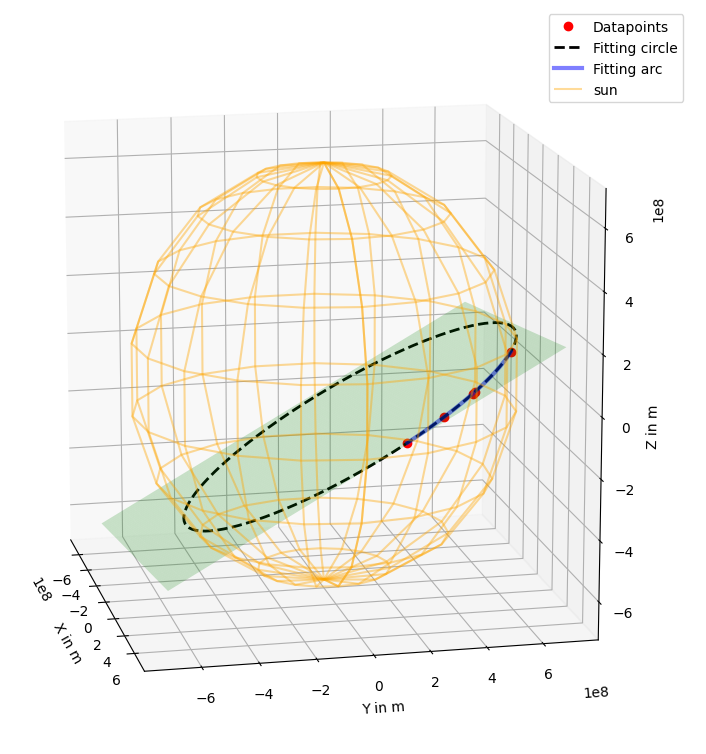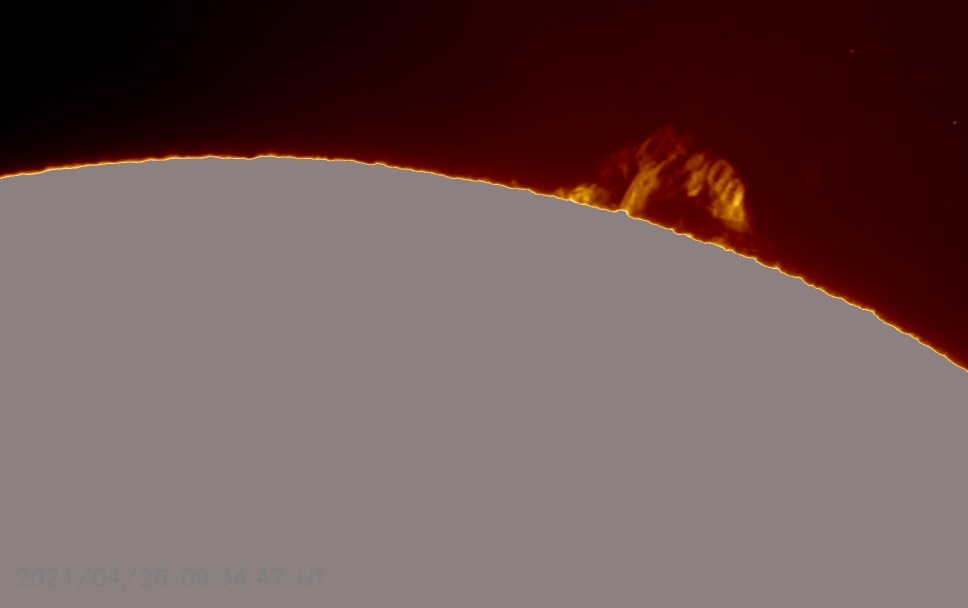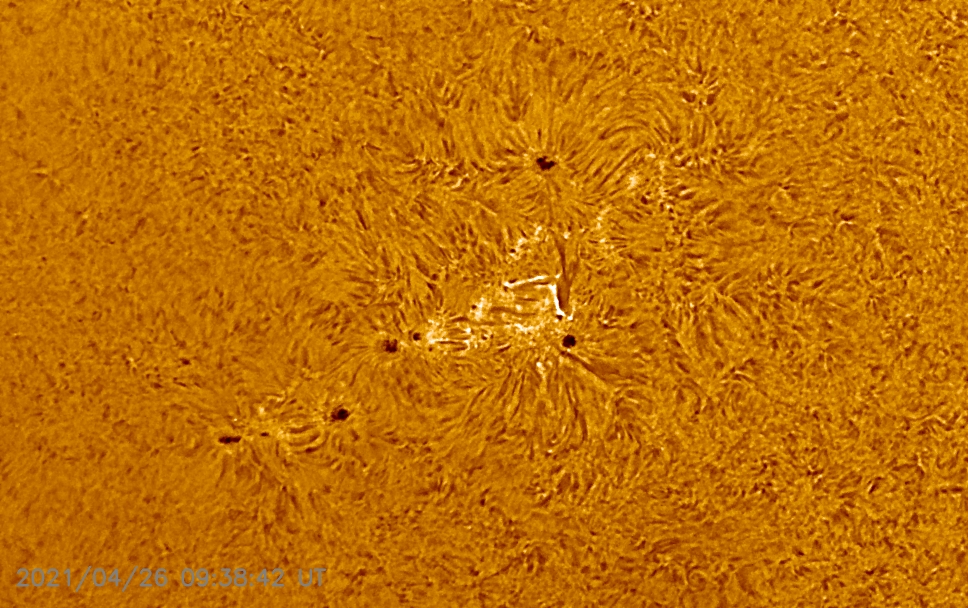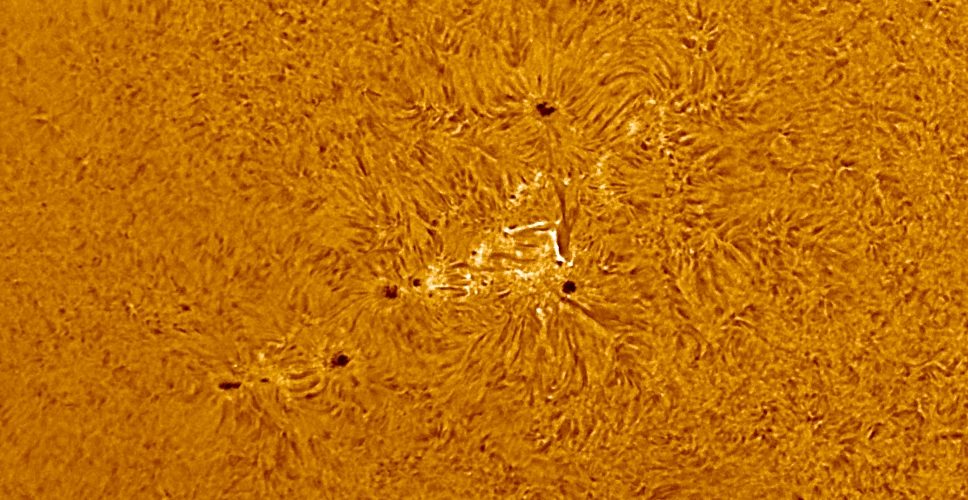With most experiments already being in use for many decades, it’s quite a privilege to be the first ones to conduct a new experiment. After a preparatory talk with the organizing professor Dr. Robert Roth we used TURM’s four telescopes to observe the sun’s activity on 26th of April 2021. What we saw were quite some sunspots in the center of the sun, some Plage all around the sun disc and coronal loops at different angles on the edge.

With the help of photos taken on previous days (which can be found in TURM’s archive), the movement of the sunspots and thus of the sun’s surface becomes clear. By extracting the 2d coordinates of one major sunspot over time and converting them into 3d, we were capable of finding the corresponding plane of movement. Within this plane a circle was fitted. Using its radius, the latitude φ of the sunspot could be estimated to φ = (16,24 ± 2,04)°. With the help of the circle’s circumference, the sideric rotation period at this particular latitude could also be calculated and yielded (25,66 ± 0,28) days. The 3d graph visualizes this process.

Not part of any quantitative analysis, but undoubtedly impressive, are the detailed shots of the sun’s surface and the edge of the disk in hydrogen-alpha-light. In the following picture, one can identify a coronal loop formed by a tremendous stream of plasma that, due to its charge, follows the magnetic field lines.

Additionally, a detailed photo of the group of sunspots that has been used to determine the surface’s rotation period was taken. The bright spots close to some sunspots are called Plage and indicate a concentration of magnetic fields whose influence also determines the structure of the Granules close to the sunspot. Whereas the Granules normally appear more or less random on the suns surface, they form lines in the environment of sunspots.
For a more detailed report on our experience with this experiment take a look at our blog post You can see quite some sunspots today written in Spanish (English machine translation).

